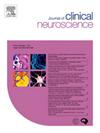Evaluating felt stigma among people with epilepsy: Insights from Saudi Arabia
IF 1.9
4区 医学
Q3 CLINICAL NEUROLOGY
引用次数: 0
Abstract
Background
Epilepsy is a chronic neurological disorder. Stigma significantly contributes to the disease burden and delays in medical management. Enacted stigma involves discrimination against people with epilepsy, while felt stigma, or internalized stigma, is the shame associated with epilepsy. In Saudi Arabia, enacted stigma has been extensively studied, revealing misconceptions about epilepsy. This study aims to determine the severity of felt stigma, its association with sociodemographic characteristics, and its relation to epilepsy features.
Methods
This cross-sectional study was conducted among people with epilepsy at a tertiary university hospital. The Internalized Stigma of Mental Illness (ISMI) scale, adapted for epilepsy, was used. The validated and translated questionnaire was self-administered electronically in Arabic. It consists of three sections: sociodemographic data, 29 items assessing internalized stigma using a 4-point Likert scale, and 6 items assessing epilepsy features. An average score of > 2 indicates stigma: ≥2, mild; ≥2.5, moderate; and ≥ 3, severe.
Results
Of 112 participants, 19.6 % had mild internalized stigma, and 5.4 % had moderate internalized stigma, totalling 25 % with internalized stigma. No participant was found to have severe internalized stigma. Higher levels of internalized stigma were found among those who are single, have only school-level education, and low income. Epilepsy features associated with high internalized stigma include a history of status epilepticus and the use of ≥ 2 antiseizure medications.
Conclusions
Felt stigma is prevalent in Saudi Arabia in mild to moderate severity. Controlling seizures and educating patients and their families about stigma can help reduce its prevalence.
求助全文
约1分钟内获得全文
求助全文
来源期刊

Journal of Clinical Neuroscience
医学-临床神经学
CiteScore
4.50
自引率
0.00%
发文量
402
审稿时长
40 days
期刊介绍:
This International journal, Journal of Clinical Neuroscience, publishes articles on clinical neurosurgery and neurology and the related neurosciences such as neuro-pathology, neuro-radiology, neuro-ophthalmology and neuro-physiology.
The journal has a broad International perspective, and emphasises the advances occurring in Asia, the Pacific Rim region, Europe and North America. The Journal acts as a focus for publication of major clinical and laboratory research, as well as publishing solicited manuscripts on specific subjects from experts, case reports and other information of interest to clinicians working in the clinical neurosciences.
 求助内容:
求助内容: 应助结果提醒方式:
应助结果提醒方式:


